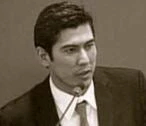 Baku/Azerbaijan: art classes at school
Baku/Azerbaijan: art classes at school
In recent years, Azerbaijan has achieved high growth rates, sustained poverty reduction, and a reduction in debt levels. At the same time, the country’s primary and secondary education system has expanded significantly, ensuring increased access to learning for children and young people.
Despite this important progress, however, Azerbaijan’s human capital productivity remains below potential. According to the Human Capital Index, a child born in Azerbaijan today will be 60 percent as productive when she grows up as she could be if she enjoyed complete education and full health. Many people are thus missing out on potentially high returns to human capital.
But just how rewarding are the investments in human capital? We examined the private and social returns to education, using data from Azerbaijan’s 2015 nationally representative Monitoring Survey for Social Welfare, which surveyed nearly 38,700 individuals.
We found that, for the working population, the level of education is high – at 13 years of schooling, on average. Among those surveyed, 69 percent had completed high school, while 20 percent had completed higher education. Despite progress improving rates of high school graduation, Azerbaijan has yet to see similar success in university graduation rates.
The private return to investment in education is 6.1 percent, which is generally positive, but still below the global average of 8-10 percent. Meanwhile, the overall private rate of return to tertiary education (relative to secondary) is 9 percent.
We see noteworthy differences between the returns to women and men. For women, average returns to schooling (primary and secondary education) are higher by two percentage points, at 8.3 percent, compared to 6.2 percent for men. Private returns to tertiary education are also higher for women, at 11 percent, compared to 9 percent for men.
Azerbaijan’s labor force has 21 years of experience, on average, which suggests a middle-aged workforce. The employment rate is higher among men than women, despite the fact that female workers have half a year more schooling than men, and two more years of experience. While the earnings advantage of secondary education is minimal, those with higher education earn 1.4 times more than those with primary education.
Returns to schooling are highest in the manufacturing sector, at 8 percent; followed by services at 5 percent; and agriculture and other sectors at 3 percent. Overall, the returns to education in Azerbaijan are low, and have not changed much in the last 20 years.

In Azerbaijan, public funding of education is relatively low. In 2018, overall public education spending accounted for just 3 percent of GDP. And, of the total education budget, only 10 percent went towards tertiary education.
Higher education institutions in Azerbaijan receive per capita student payments, and some universities get infrastructure costs. The nominal cost for tertiary education is calculated based on the fact that 64 percent of students pay tuition, at 1,800 manat (about $1,000), while the remaining 36 percent are covered by a public subsidy, or 1,700 manat.
Attending tertiary education in a public institution here leads to two different returns to investment in education estimates, depending on whether the student paid tuition or not. For those students who pay tuition, the rate of return to investment in education is almost 50 percent lower than for those students who receive a scholarship.
Tertiary education in Azerbaijan is currently characterized by low levels of enrollment, and a high degree of cost recovery. Student admission quotas are tightly controlled by the government, resulting in limited access to tertiary education for many young people. Indeed, the quota-to-applicant ratio has been declining since the mid-1990s. As a consequence, a smaller share of today’s young generation has graduated from universities and technical vocational colleges compared to their parents’ generation.
The cost of private tutoring, which is essential for preparing students for university entrance examinations, is high and prevents students from poorer families from being among the highest scoring students who qualify for the merit-based tuition-free places. Tuition fees for public universities are also prohibitively high – as such, poor students who did not qualify for funding and who have lower grades are unable to afford tuition.
In terms of years of schooling and levels of education completed, Azerbaijan is a highly educated country. However, the quality of education and student learning outcomes are underperforming. This suggests the need to look more closely at the financing of higher education, in particular.
Learn More: Returns to Education in Azerbaijan: Some New Estimates (Working Paper, 2020)
What else can Azerbaijan do to improve returns to education? Please share your thoughts and comments below.



Join the Conversation